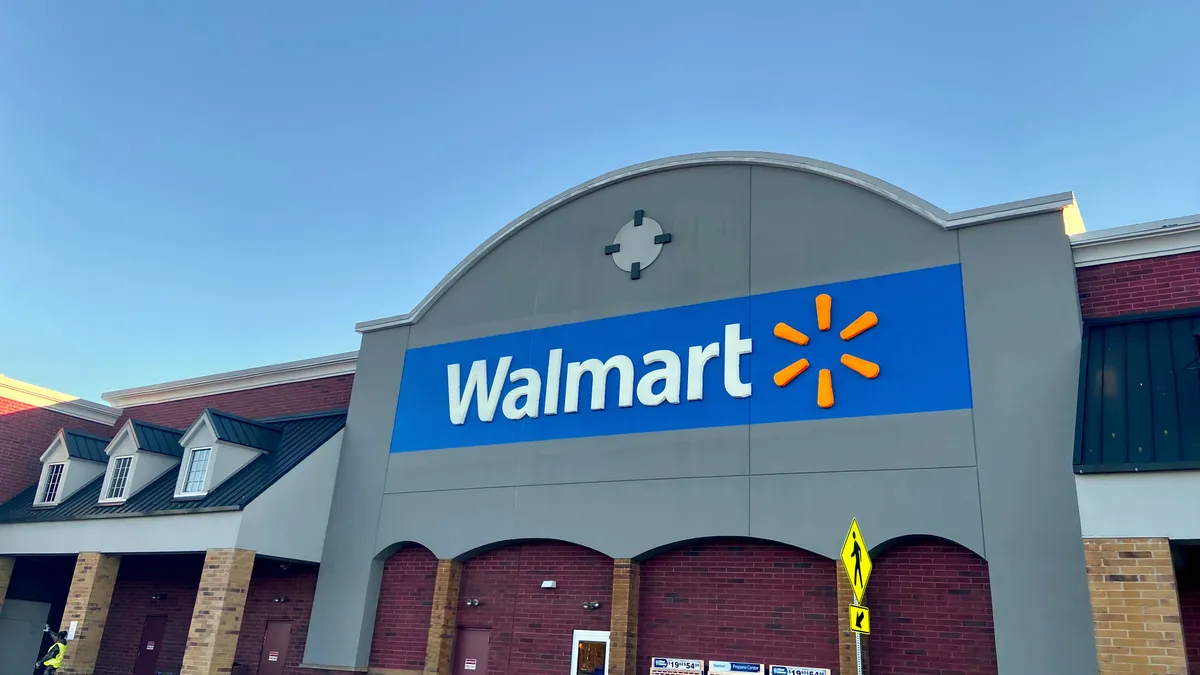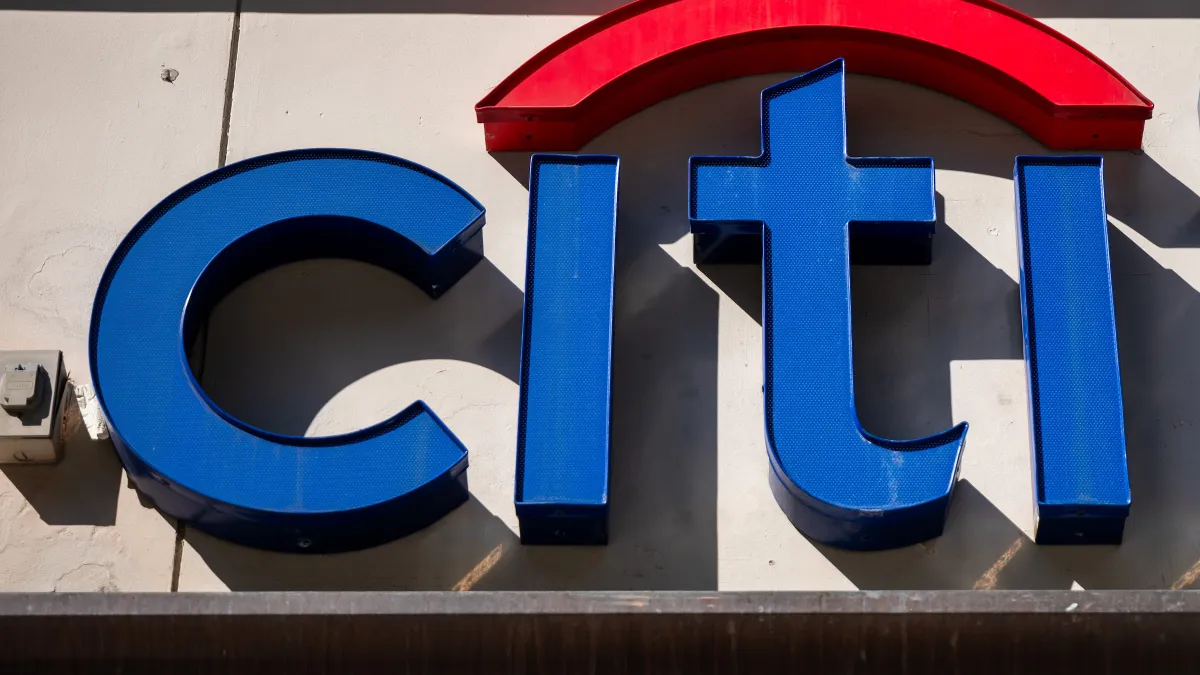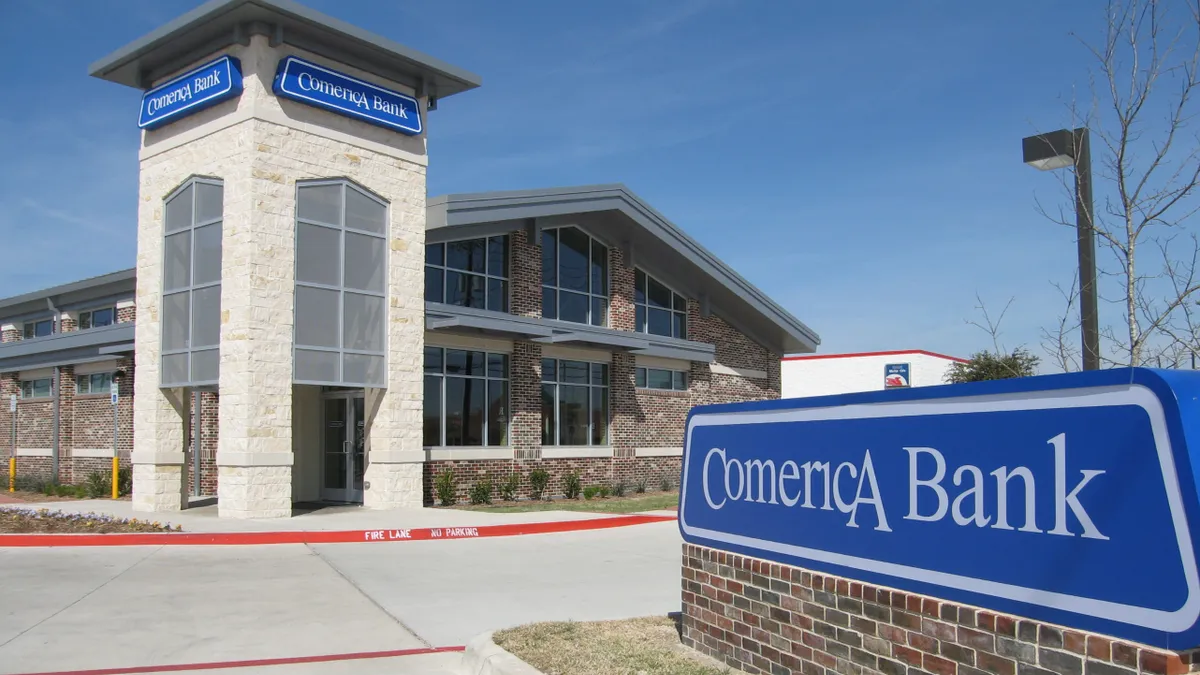Walmart’s plans to provide banking services to its 1.6 million U.S. employees and more than 100 million weekly shoppers should make bankers uneasy, said David Donovan, executive vice president of financial services for the Americas at digital consulting company Publicis Sapient.
Over the past several years, the retail giant has hinted at offering financial services products, leading many industry observers to speculate on the depth and scale of the company’s ambitions.
The company shed more light on the venture in January, when it announced plans to acquire earned wage access company Even Responsible Finance and the neobank One Finance, which partners with Everett, Washington-based Coastal Community Bank.
The company is beta-testing the banking platform, called One, with employees and intends to ultimately provide the service to customers.
But as Walmart moves toward that broader rollout, it may already have a major leg up on its competitors.
“They don’t need to go acquire customers, they already have them,” said Donovan, whose company worked to build Goldman Sachs’ consumer bank, Marcus. “They just have to roll that service out and make it really easy and simple. It's like, build it, and they’ll come.”
The cost of acquiring a banking customer is typically between $100 and $200, according to a study by Oliver Wyman.
“Acquisition costs are a lot. It's a lot to get a new customer when you're not an established brand,” Donovan said.
It’s not clear what that cost will be for an entity like Walmart, a household name with an established bricks-and-mortar presence, but all the retailer may need to do to find success in banking is to launch a simple, easy-to-use product, Donovan said.
“If you think about the emerging demographic, Gen Z, they are not really wedded to the bank brand as demographics of the past,” Donovan said. “What they're mostly interested in is the frictionless usability of whoever their brand is that they end up banking with — no fees, no minimum balance, high yield and easy onboarding experience.”
But those features are not unique. Neobanks have long offered accounts with no minimum balances or overdraft fees.
Walmart’s advantage may be its scale. The retailer has more than 4,700 locations in the U.S. and 90% of the U.S. population is within 10 minutes of a store, according to Forbes.
In theory, the company already has the brand recognition and scale necessary to grow the platform into a strong competitor to other neobanks and legacy institutions targeting the same demographic.
“Banks have great technology and they definitely create a good experience, but what they don't do really well is scale,” Donovan said. “Walmart already has scale, because they already have the existing user base through the Walmart brand. Now they’re just layering on another service.”
Eyes on Walmart
This isn’t Walmart’s first bid to become a financial services player. The company tried to gain a banking license in 2005 through an industrial loan company (ILC) charter — a move that stoked widespread opposition from the banking industry.
Walmart withdrew its charter application two years later.
The company renewed its financial services ambitions last year, when it unveiled plans to launch a fintech startup in partnership with venture capital firm Ribbit Capital.
“The minute you start talking about Walmart and banking, the alarm bells go off,” banking consultant Bert Ely told Bloomberg last year.
Walmart also hired Marcus’ chief executive, Omer Ismail, and head of large partnerships, David Stark, to run its new effort.
While initial details on the retailer’s financial services ambitions were scarce, industry observers quickly speculated a “superapp” or “neobank” was in the works after the company said the venture would bring together Walmart’s retail knowledge and scale with Ribbit’s fintech expertise “to deliver tech-driven financial experiences tailored to Walmart’s customers and associates.”
Walmart CEO Doug McMillon followed up at a February 2021 investor conference, saying the project would help the company “deliver for [customers] in a differentiated way more quickly.”
An April 2021 patent filing offered additional clues as to what the company was up to, listing standard financial services such as credit card, debit card, and prepaid card payment processing services, electronic funds transfer, credit card and credit line issuing, and bill payment services.
Then in January, Walmart’s acquisitions of Even Responsible Finance and One Finance further solidified the retailer’s plans to grow beyond its core business.
As a result of those deals, the fintech venture dropped its Hazel moniker and was rebranded as One. Financial terms were not released.
Is it what customers want?
Customers may want an easy-to-use and simple banking service, but are they willing to go to Walmart for it?
Walmart’s existing bank-adjacent services suggest customers are already comfortable turning to the company for certain financial products.
Walmart has a partnership with Green Dot to offer prepaid debit cards and has teamed up with payments company Affirm to offer installment payment options.
Customers can also cash checks and send money abroad at the retailer’s MoneyCenters.
But customers have told the retailer that they are looking for more bank-like services under the Walmart brand, said John Furner, president and CEO of Walmart U.S.
“Customers have made it clear that they want more from us in the financial services arena,” Furner said in January. “Creating a simple, personalized app that allows users to manage their money in one place is the natural next step toward fulfilling that,”
Consumers are willing to consider bank accounts offered by retailers, said Paul McAdam, senior director of banking and payments intelligence at J.D. Power.
“Bank accounts are commodities and are no longer the exclusive domain of traditional banks and credit unions,” said McAdam, adding that Walmart could likely find success in the online-banking space.
“Today, 27% of banking customers in America use an online-only bank or neobank,” he said. “As so much of our lives continue to shift to digitally based providers, online-only banking providers have gained market share and mindshare by delivering around-the-clock access and getting the personalization formula right by helping customers reduce banking fees and grow their money.
“There’s no reason to believe that Walmart will not formulate an approach to effectively compete in this market,” McAdam said.
As Walmart dives deeper into financial services, the company joins a growing list of nonbanks that are reshaping the banking landscape, Donovan said.
“When [JPMorgan CEO] Jamie Dimon looked out his window five years ago, he was probably thinking, ‘What are Goldman, Bank of America and Morgan Stanley doing?’” Donovan said. “Fast-forward to today, and that's just one set of competitors he needs worry about ... Now he needs to worry about Apple, Walmart, fintechs, neobanks — pretty much anybody because, ultimately, anybody can be a financial services company in some form or fashion.”





















